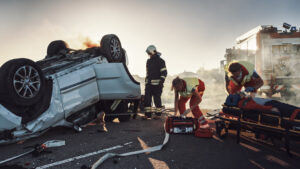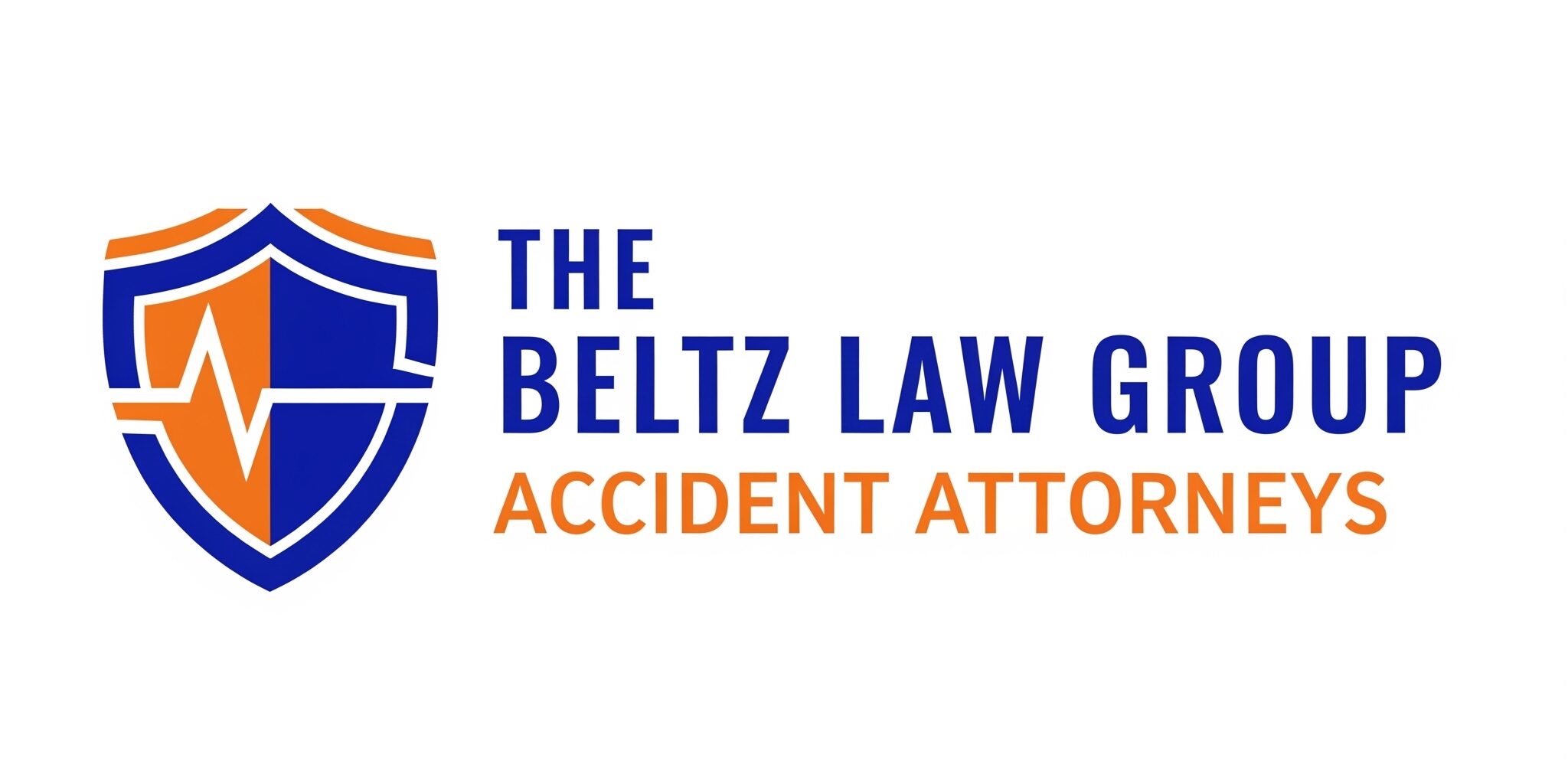Last Updated on June 19, 2025 by Beltz Law Group

Trucking Accident Lawyer
Understanding the Burden of Proof in Car Accident Cases in Texas
In any car accident claim, securing compensation for your injuries and damages hinges on proving that another party was at fault. This legal concept is known as the “burden of proof.” While it might sound technical, understanding it is crucial for anyone involved in a collision. At The Beltz Law Group, we specialize in helping accident victims meet this burden and secure the justice they deserve.
If you or a loved one has been injured in a car accident in Fate, Texas, or the surrounding areas, contact us for a free consultation at 214-321-4105.
The “Preponderance of the Evidence” Standard
In civil cases, like car accident lawsuits, the standard for the burden of proof is “by a preponderance of the evidence.” This is a less stringent standard than “beyond a reasonable doubt” used in criminal cases.
What does “preponderance of the evidence” mean?
- It signifies the greater weight and degree of credible evidence.
- Think of it like a scale: if you put all the evidence supporting your side on one side of the scale and all the evidence opposing it on the other, your side must tip the scale, even if just slightly.
- It does not mean you have to prove your case 100%. Instead, the evidence must show that it is more likely than not (meaning 50.1% or greater probability) that your claims are true.
This standard requires a jury (or judge, in a bench trial) to review all presented evidence, assess its credibility, and determine if your evidence carries more weight than any evidence opposing it. If it does, that element of your case is considered proven.
Key Elements to Prove in a Texas Car Accident Negligence Claim

Truck Accident Lawyer
To successfully meet the burden of proof in a car accident case in Texas, you must typically prove four core elements of negligence:
-
Duty of Care: Every driver on the road owes a fundamental duty of care to all other road users (other drivers, passengers, pedestrians, cyclists). This duty requires them to operate their vehicle safely, obey traffic laws, pay attention, and exercise reasonable caution to avoid causing harm.
- Example: A driver has a duty to stop at a red light.
-
Breach of Duty: This element requires proving that the at-fault driver failed to uphold their duty of care. This “breach” is essentially their negligent act or omission.
- Example: The driver ran the red light.
-
Causation (Actual and Proximate): You must demonstrate a direct link between the defendant’s breach of duty and your injuries or damages. Texas law requires proving two types of causation:
- Actual Cause (“Cause-in-Fact”): This is often referred to as the “but for” test. “But for” the defendant’s negligent actions, would your injuries or damages have occurred? If the answer is no, then actual causation is likely met.
- Example: “But for” the other driver running the red light, the collision and your injuries would not have happened.
- Proximate Cause: This element focuses on foreseeability. Was the injury a reasonably foreseeable result of the defendant’s negligent act? This prevents liability for extremely remote or unpredictable consequences.
- Example: It is foreseeable that running a red light could cause an accident and injuries to others.
- Actual Cause (“Cause-in-Fact”): This is often referred to as the “but for” test. “But for” the defendant’s negligent actions, would your injuries or damages have occurred? If the answer is no, then actual causation is likely met.
-
Damages: Finally, you must prove that you suffered actual damages as a direct result of the accident. These can include:
- Economic Damages: Quantifiable financial losses such as medical bills (past and future), lost wages (past and future), property damage, and other out-of-pocket expenses.
- Non-Economic Damages: Non-monetary losses such as pain and suffering, mental anguish, disfigurement, physical impairment, and loss of consortium.
Evidence is Key to Meeting the Burden of Proof

Attorney For Serious Injuries
Gathering compelling evidence is paramount to satisfying the “preponderance of the evidence” standard. Your attorney will meticulously collect and analyze various forms of evidence, including:
- Police Reports: These reports often contain crucial details about the accident, including the officer’s initial observations, witness statements, and sometimes the officer’s opinion on fault or citations issued.
- Photographs and Videos: Images of vehicle damage, the accident scene (debris, skid marks, road conditions), and your injuries provide powerful visual proof. Dashcam or surveillance footage can be game-changers.
- Witness Statements: Testimony from impartial third-party witnesses who observed the accident can corroborate your account and provide valuable unbiased perspectives.
- Medical Records and Bills: These documents are essential for proving the extent and nature of your injuries, the treatments you received, and the costs incurred. They directly link your harm to the accident.
- Wage Loss Documentation: Pay stubs, employment records, and employer letters can substantiate claims for lost income due to your injuries.
- Vehicle Repair Estimates/Bills: Proof of property damage supports your overall claim and helps illustrate the impact of the collision.
- Accident Reconstruction Expert Testimony: In complex cases, experts can analyze physical evidence (e.g., skid marks, vehicle damage, data from vehicle event recorders) to reconstruct the accident and provide expert opinions on causation and fault.
The Impact of Comparative Negligence in Texas
Texas operates under a modified comparative negligence system, also known as “proportionate responsibility” (Texas Civil Practice & Remedies Code § 33.001). This means that if you are found to be partially at fault for the accident, your recoverable damages may be reduced by your percentage of fault.
- The 51% Bar Rule: Crucially, if you are found to be more than 50% responsible for the accident, you are legally barred from recovering any damages from the other party.
- Example: If you sustained $100,000 in damages, but a jury determines you were 20% at fault, your compensation would be reduced by 20%, meaning you would receive $80,000. However, if you were found 55% at fault, you would receive nothing.
Because of this rule, defendants and their insurance companies will often try to shift as much blame as possible onto the injured party. Your attorney’s role is critical in gathering strong evidence to minimize your assigned fault percentage and maximize your compensation.

Truck Accident Attorney
The Role of a Car Accident Attorney
Navigating the complexities of burden of proof, evidence collection, and Texas’s comparative negligence laws can be overwhelming, especially while recovering from injuries. An experienced car accident attorney serves as your advocate by:
- Investigating the Accident: Thoroughly gathering all necessary evidence to build a strong case.
- Establishing Negligence: Proving each element of duty, breach, causation, and damages “by a preponderance of the evidence.”
- Negotiating with Insurance Companies: Protecting you from aggressive tactics and ensuring you receive a fair settlement that reflects the true value of your claim.
- Litigating Your Case: If a fair settlement cannot be reached, representing you vigorously in court to present your evidence and argue your case to a judge or jury.
- Minimizing Your Assigned Fault: Strategically countering attempts by the defense to place blame on you.
Contact The Beltz Law Group
If you’ve been involved in a car accident in Fate, Texas, or anywhere in the state, understanding and proving your case is paramount. Don’t face the complex legal process alone. The Beltz Law Group is dedicated to fighting for the rights of accident victims.
Contact us today at 214-321-4105 for a free consultation to discuss your case and how we can help you meet the burden of proof and pursue the compensation you deserve.







